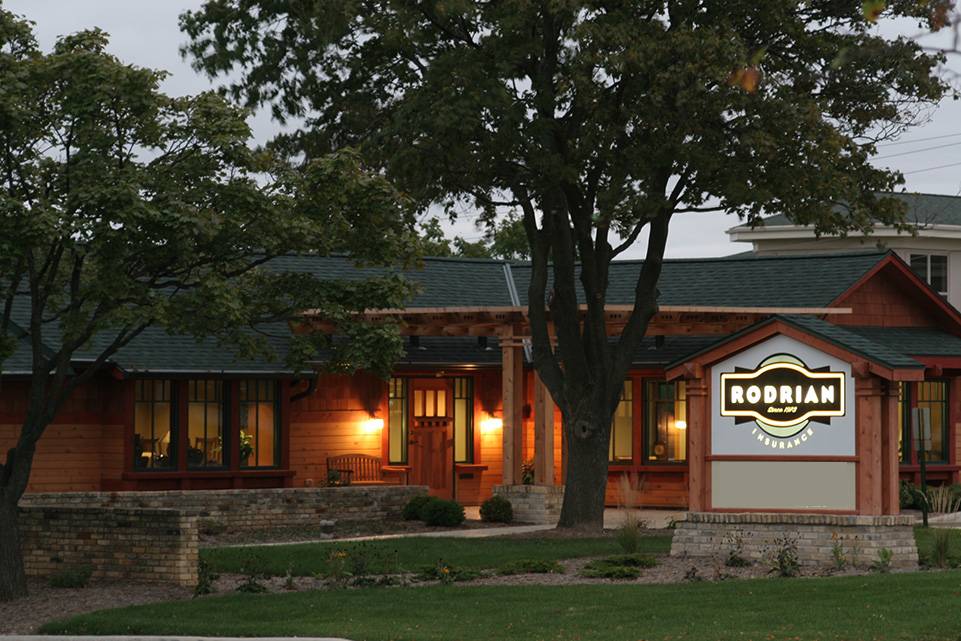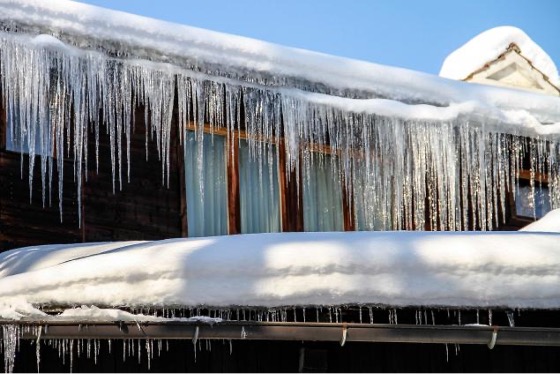Homeowners want to avoid insurance claims whenever possible because they can raise your rates and contribute to rising insurance costs overall for your shared risk pool. Claims in winter are more of a hassle than any other time of year because they typically involve weather issues and difficult repairs. Here’s how you can skirt some of the most common claims we see and spend your time enjoying cocoa by the fire instead.
Protect Your Pipes from Freezing
Frozen and burst pipes are double trouble in winter. Not only can your home incur massive water damage, but you may have to replace expensive plumbing components as well. Sure, your homeowners insurance policy will likely cover this scenario, but you don’t want to deal with the headaches and possibility of damage to irreplaceable items.
You can take steps to prevent freezing pipes:
- Insulate vulnerable pipes, like those in attics, crawlspaces, and other cold areas.
- Disconnect your garden hose and cover the spigot before the temperatures plummet.
- Replace any old pipes that have signs of previous freezing, such as pinhole leaks or strained connectors.
- Turn on your taps slightly and let the water drip during extreme cold spells or if you lose power for an extended period.
- Drain pipes and shut off the water in little-used vacation properties.
- Never turn your heat below 55 degrees Fahrenheit during winter, even if you’re not home; use a programmable thermostat to raise and lower your heat according to your schedule.
Stop Ice Damming Before It Happens
Ice damming is a very common problem in the Upper Midwest. It occurs when the higher part of your roof becomes warmer than the lower part. Snow above melts, and the water runs down the roof, where it hits the frozen area around your gutters. The lower part of the roof acts like a dam with the melted snow, forcing it to follow the path of least resistance – usually inside the home.
Ice dams can cause water damage, stained walls, and weakening of your home’s structure, as well as promote the unhealthy growth of mold and mildew. You can prevent ice dams by:
- Insulating the upper levels of your home, especially attics and rooms under the roof
- Installing appropriate roof ventilation to even out roof temperatures
- Removing heavy snowfall from the roof using a special long-handled roof rake
If you’re not sure about how to do this, a weatherization contractor can assist you with preparing your roof area. If you find yourself with a roof dam, deal with it immediately. A roofing expert can help you cut a channel for the melted snow, so it doesn’t enter the home.
Replace Old Roofing
It’s best not to wait until you have a roof leak or damage from hail to replace roofing that is no longer up to the job. Newer roofing materials are more resistant to storms, and a new roof can give you the peace of mind that you won’t have drips and ceiling spots. If a new roof isn’t in the budget, a late fall cleaning and check will let you reattach any loose shingles or flashing.
You can further protect your roof by making sure tree branches are trimmed so they aren’t encroaching on it. Also, at the end of autumn, once all the leaves are done falling, make sure your gutters and downspouts are free of debris. That’s a good time to add protective screening for less work in the spring.
Reduce the Risk of House Fires
According to the National Fire Protection Association (NFPA), approximately one-fourth of all fires occur in homes. Of the usual home fire causes, several avoidable ones are of particular concern in winter:
- Chimney fires – have your chimney professionally cleaned and inspected before using it every winter.
- Electrical and lighting issues – make sure holiday lights are in good shape before hanging them and that you’re not overloading electrical circuits in the home.
- Heating – have your furnace checked before firing it up in the cold weather, and never leave portable electric heaters near flammable objects or unattended.
- Cooking – watch out for fire risks when cooking those big winter meals, and never use a camp stove or grill meant for the outdoors inside your house.
Maintain Your Sidewalks and Steps
Don’t forget that your homeowners insurance also covers liability. You can avoid slip-and-fall claims by keeping your sidewalks, stairs, and other pathways to the home free of ice and snow for visitors, like friends and delivery people. If you’re not going to be home, hire someone to take care of these chores until you return.
Take Security and Precautionary Measures in Your Absence
Folks here in Wisconsin and around the Great Lakes like to get away on vacation every winter, whether that’s to go skiing in the UP or head to a beach destination to escape the snow. If you’re leaving home overnight, use these tips to improve safety and reduce the need for vandalism, theft, and damage claims:
- Install a security system. New equipment today is reasonably priced and can be controlled remotely via your mobile phone.
- Put your lights on a timer, so it looks like someone is home. Better yet, hire a house sitter to take care of everything.
- Stop your mail and newspapers, which are a dead giveaway no one is home if they pile up.
- Turn off the water supply to your clothes washer. A burst hose could flood your home in your absence. An alternative is to install a plumbing leak detection system, which will alert you in an emergency.
Contact Rodrian Insurance for Homeowners Insurance
Sometimes you can take every precaution and still find yourself needing to file a wintertime homeowners claim. And if you need a new homeowners policy, or if you are an existing customer and want to make sure you have adequate coverage, we’re here for you at Rodrian Insurance. Call us at 262-781-4750 or reach out online to start a policy today.





